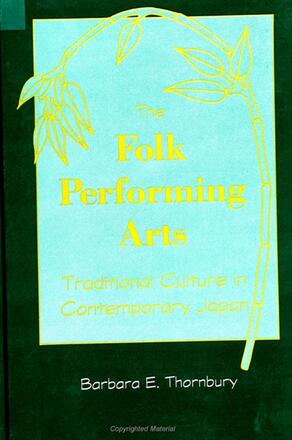
The Folk Performing Arts
Traditional Culture in Contemporary Japan
Alternative formats available from:
Addresses issues concerning the survival and preservation of traditional culture by examining Japan's folk performing arts and the public policies that affect them.
Description
CHOICE 1997 Outstanding Academic Books
This is the first full-length study in English of Japan's folk performing arts covering such topics as the different categories of presentations, public policies affecting the folk performing arts, performance events within and without communities, and the folk performing arts in literature. Throughout, it addresses issues concerning the survival and preservation of traditional culture in contemporary Japan.
Once largely unknown outside of their local community settings, Japan's folk performing arts have today captured universal attention. In Japan, almost every municipality is home to one or more of the diverse dramatic, dance, narrative, and musical presentations that make up the folk performing arts. They can be seen at events that range from long-established festivals to newly created folk-culture and tourist programs.
Since the 1920s, a growing body of work by folklorists, theater historians, and other academic specialists, together with literary treatment by well-known authors, brought the folk performing arts into the national cultural spotlight. The postwar Cultural Properties Protection Law conferred on them the status of legally designated cultural assets.
Barbara E. Thornbury is Associate Professor of Japanese at Temple University.
Reviews
"This is a book that will remain as an invaluable reference for Japan's folk performing arts. It is well researched, clearly written, and full of important information which is not available in any existing book in English or other Western language." — Benito Ortolani, Brooklyn College and the Graduate Center of the City University of New York
"The availability of the book will bring an important aspect of contemporary Japanese culture and its historical origins to the attention of readers. In short, it fills a gap in our knowledge of a significant aspect of current and historical Japan, as well as pointing out the relevance this has to readers in many other specialized areas." — Frank Hoff, University of Toronto